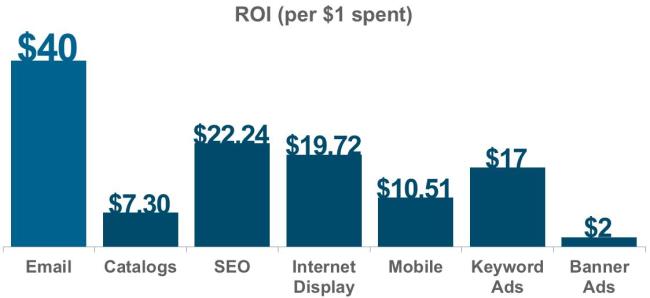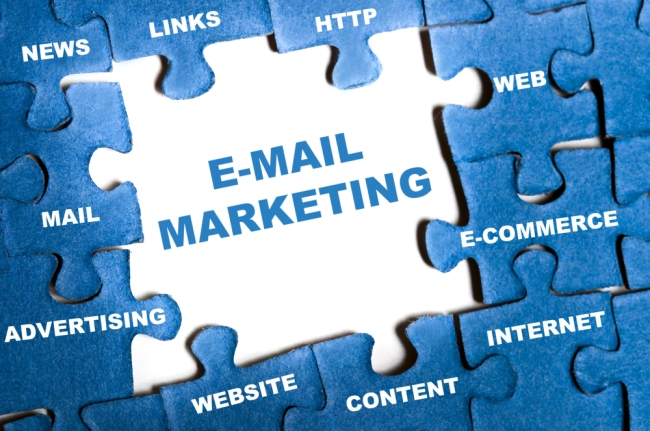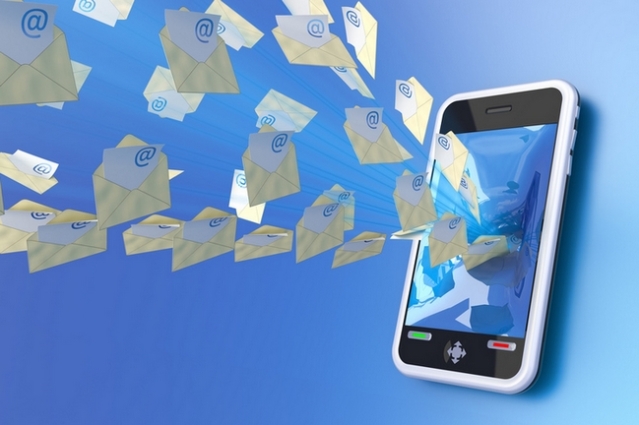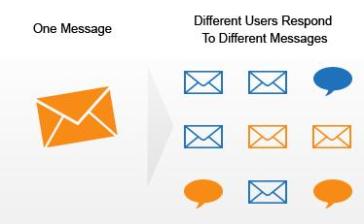Did you know that marketers sent over 838 billion e-mails in 2013? That’s almost 9 times as many direct mail pieces the U.S. Postal Service delivered.
I know the types of stats you’re looking out for: numbers on e-mail engagement and frequency, mobile optimization, and ROI. Data is power, which is why I have put together this list of 73 essential statistics every e-mail marketer needs to know. I know firsthand just how profitable e-mail marketing can be. One of my e-mail campaigns generated $700,000 in profits on a minimal investment.

E-MAIL MARKETING ROI
1. Email marketing has an ROI of 4,300%.
2. For every $1 spent, $44.25 is the average return on email marketing investment.
3. Companies view email marketing as a better return on investment than PPC, content marketing, social media, offline direct marketing, affiliate marketing, online display advertising, and mobile marketing.
4. 60% of marketers believe email marketing produces positive ROI.
Takeaway: E-mail marketing should be taken more seriously. Integrate e-mail with your overall marketing mix and consider allocating more internal and/or external resources to e-mail marketing.
GENERAL E-MAIL MARKETING
1. Nearly two thirds of marketers rate their company e-mail as poor or average and less than 4% rate it as “excellent”.
2. 91% of consumers check their e-mail at least once a day.
3. 56% of businesses say they plan to increase their use of e-mail marketing in 2014.
4. 42% of marketers use e-mail service providers for services beyond e-mail broadcasting. This is up 12% from 2010.
5. Companies that use an e-mail service provider are more likely to be satisfied with their e-mail marketing than companies who do not.
6. Less than half (41%) of companies are using more than half of their e-mail system functionality, which has not improved since last year.
7. In addition to broadcast e-mail, measurement and analytics, personalization, automated campaigns, and segmentation are the popular services provided by e-mail service providers that marketers tap into.
8. Businesses are looking for deeper integration of e-mail with other business functions. The most common barrier to integrating e-mail with overall business strategies is disconnected systems and technologies.
9. Only 8% of companies and agencies have an e-mail marketing team. E-mail marketing responsibilities usually fall on one person as a part of her wider range of marketing responsibilities.
10. There were 3.6 billion e-mail accounts in 2013.
11. By 2016, the number will reach 4.3 billion.
12. 54% of e-mails sent by businesses are marketing messages.
13. 838 billion marketing messages were sent in 2013.
14. 91% of consumers check their e-mail daily.
15. 72% of B2B buyers are most likely to share useful content via e-mail.
16. 56% of businesses say they plan to increase their use of e-mail marketing in 2013.
17. 27% of consumers were more likely to say their favorite companies should invest in more e-mail.
18. 1 in 2 marketers use animated gifs in their e-mail campaigns.
19. E-mail ad revenue reached $156 million in 2012.
20. E-mail marketing spending grows 10% year over year.
21. 40% of B2B marketers rated the leads generated by e-mail marketing as high quality.
22. 74% of consumers prefer to receive commercial communications via e-mail
23. The average clickthrough rate for B2B marketing e-mails in Q2 2013 was 1.7%.
24. 59% of companies are integrating e-mail and social channels together.
25. 17% of marketers don’t track or analyze e-mail metrics for their organization.
Takeaway: An e-mail marketing plan should be developed that is fully integrated into your overall marketing mix. Have an e-mail marketing calendar created to maximize engagement and sales with your active and past customers and prospects and have e-mails sent out regularly.
MOBILE
1. E-mail is the most popular activity on smartphones among users ages 18-44.
2. Over half of smartphone users grab their smartphone immediately after waking up.
3. 64% of decision-makers read their e-mail via mobile devices.
4. The #1 e-mail client for Gmail users is the iPhone’s built-in mail program, with 34% of all Gmail opens.
5. 32% of marketers do not have a strategy in place to optimize e-mails for mobile devices.
6. 39% of marketers have no strategy for mobile e-mail.
7. 48% of e-mails are opened on mobile devices.
8. Only 11% of e-mails are optimized for mobile.
9. 69% of mobile users delete e-mails that aren’t optimized for mobile.
10. Women click 10% more often than men on mobile e-mails.
11. 25% of e-mails are opened on iPhones.
12. 64% of decision-makers read their e-mail via mobile devices.
Takeaway: Keep mobile at the center of your e-mail marketing plan. Make sure links in your e-mails are optimized for mobile and readers can continue to engage via mobile. Subject lines are more important than ever.
SALES
1. 66% of US online consumers, ages 15 and up made a purchase as a result of e-mail marketing messages.
2. Over 70% of mobile purchasing decisions are influenced by promotional e-mails.
3. Over half of businesses achieve over 10% of total sales through e-mail marketing.
4. 44% of e-mail recipients made at least one purchase last year based on a promotional e-mail.
5. 7 in 10 people say they made use of a coupon or discount from a marketing e-mail in the prior week.
6. 66% of consumers have made a purchase online as a result of an e-mail marketing message.
Takeaway: E-mail marketing is a powerful sales channel. It represents a growing % of company sales and profits.

SUBJECT LINE
1. Nearly one third of e-mail recipients open e-mail based on subject line alone.
2. Subject lines fewer than 10 characters long has an open rate of 58%.
3. Personalized subject lines are 22.2% more likely to be opened.
4. Crazy subject lines generate opens but will damage subscriber relationships. If you use a subject line such as “Free books”, you better actually offer free books. An exciting subject line that gets someone to open an e-mail but leaves them with nothing special in return can have a negative effect on your business in the long-term. Why would a subscriber open your next e-mail if they no longer trust you?
5. Using “Alert” or “News” or “Bulletin” in subject lines significantly boosts open and click-through rates.
6. Using “Daily” or “Weekly” in subject lines boosts open and click-through rates whereas “Monthly” hurts open rates and click-through rates.
7. Using the words “Sale” or “New” or “Video” in subject lines boost open and click-through rates.
8. For B2B companies, subject lines that contained “money,” “revenue,” and “profit” performed the best.
9. 64% of people say they open an e-mail because of the subject line.
Takeaway: The key to higher opens and click-through rates is consistency (daily or weekly), urgency (alert, news, bulletin), and special offerings (sale, new, video). Don’t use insane subject lines unless they deliver as promised. Run A/B Split Tests for subject lines when sending e-mails.

LIST & DELIVERABILITY
1. Almost half of subscribers are inactive on an e-mail list.
2. Over 20% of marketing e-mails never make it to a subscriber’s inbox.
3. E-mail open rates are noticeably lower on weekends than on weekdays.
4. Sending four e-mails in a month instead of one significantly increases the number of consumers opening more than one e-mail.
5. 76% of e-mail opens occur in the first two days after an e-mail is sent.
6. Gmail opens have decreased by 27% since May.
7. 82% of consumers open e-mails from companies.
8. Suppressing anyone in your list who hasn’t engaged with your e-mails in over a year increases your deliverability rate by 3-5% immediately.
9. Less than 1 in 2000 subscribers mark an e-mail as SPAM.
10. This year, about 84% of all e-mail traffic will be spam.
11. Roughly half of an e-mail list will be active – either opening or clicking on e-mails.
12. Lists are responsible for 50% of the success or failure of a mailing and e-mailing campaign.
Takeaway: Clean out your e-mail list every few months and avoid sending on weekends. When selecting e-mail marketing software, make sure deliverability is strong.
TESTING & OPTIMIZATION
1. Design and content is the most time-consuming e-mail activity for marketers and it is taking away from spending time on testing and optimization.
2. 17% of marketers are not tracking e-mail marketing metrics for their organizations.
3. E-mails that include social sharing buttons have a 158% higher click-through rate.
4. Monday e-mails had the highest revenue per e-mail. (Experian 2012 Q4 E-mail Benchmark Report)
5. A winning subject line test can beat a long-standing control by 100% or more.
Takeaway: Use e-mail tools to spend less time designing and more time on testing and optimization.
These statistics tell a compelling story. E-mail is still the preferred mode of communication, is still biggest driver of new leads, has an astronomical ROI, and should clearly be one of your top marketing priorities.





Pingback: Making the most of the emails you send to your customers | Mole End Group
Pingback: 40 Mobile Statistics You Can’t Ignore in 2015 | Icreon
Pingback: 20 Important Digital Marketing Statistics | Digital Van Goh
Pingback: Social Media: Opportunities to be Found
Pingback: Email Marketing: 5 Big Mistakes - Brick By Brick from The Brick Factory